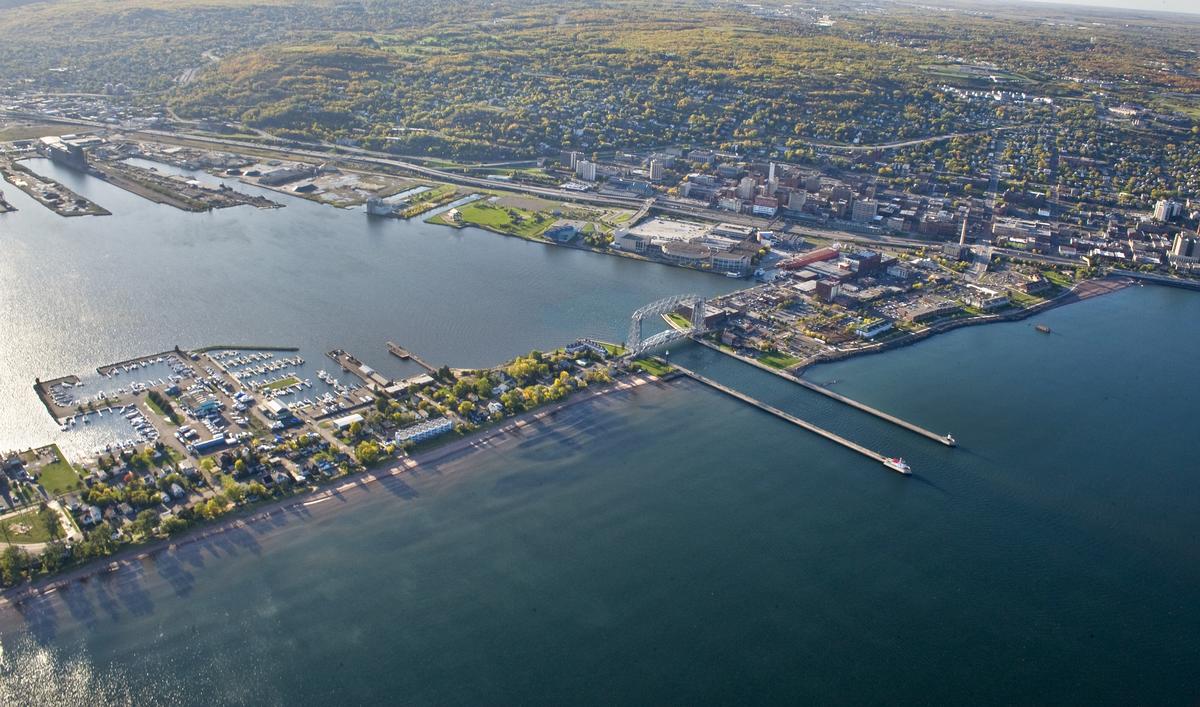Climate change has a great many components to its impact. Climate migration is one of the potentially lesser-considered impacts of anthropogenic climate change. One of the key drivers of domestic migration in the U.S. in the coming decades will be sea level rise; “a potential 13.1 million persons could be at risk of migrating due to a SLR [sea level rise] of 1.8 meters by 2100” (Hauer 2017). This is only the volume of people that could be set in motion just due to sea level rise, not considering any other potentially climate-induced migration causes, like natural disasters.
Movement away from places more prone to events like tropical storms, extreme droughts, and heat waves has already begun. The question is where are these people going to?
Duluth has been talked about considerably as one destination. In light of recent research and subsequent news articles about climate migration, especially to Duluth, the BBER has secured a University of Minnesota Institute on the Environment mini-grant to conduct research into the potential economic impacts of a large influx of climate migrants to Duluth.
So far, we have found that a combination of three factors make the city highly suitable for consideration as a climate refuge.
The first factor is Duluth’s advantageous geographical position. Duluth sits at the western point of Lake Superior. As one of the largest freshwater lakes globally, Lake Superior contains about 10% of the world’s accessible freshwater. Additionally, since Duluth is in the upper Midwest, it would be protected from sea-level rise.
The second factor is the climate. Duluth has had relatively cool summers and cold winters, which means a lower wildfire risk than the hotter and drier West or the Southeast. The Minnesota Department of Natural Resources State Climatology Office assures that Duluth has access to the most up-to-date climate information, both key to data and interpretation. State Climatology Office presentations in Duluth and efforts to mediate between the large climate data sets and public understanding are tremendous assets for the community to know where it stands as climate change occurs.
The third factor is active local engagement in infrastructure construction. Duluth has been investing in a clean-energy future in ways that not all former industrial towns have. Current and previous city administrations have provided strong support for public parks, health care facilities, and water infrastructure that could support a growing population. Consider the example of the ongoing St. Louis River Corridor Initiative, a project designed to invest in the public park and trail improvements along the Duluth shoreline corridor of the St. Louis River. The overall goals include support for outdoor recreation, economic opportunity, environmental quality, and tourism development resulting in $18 million of secured funding for the project.
Each of these aspects of the local community is being presented to support Duluth as a destination for climate migrants. Some researchers have identified Duluth as a place that has a “secret sauce” when it comes to being a place for refuge, sustainability, and resiliency. But primarily, Duluth as a climate refuge is still a theory. The BBER will share further research as it continues its study on the possible implications and economic impacts.
